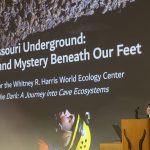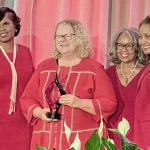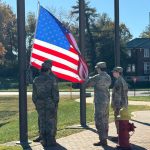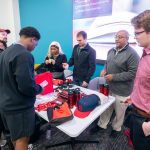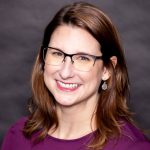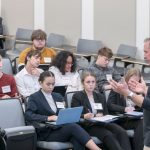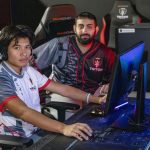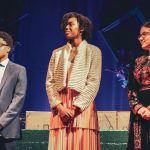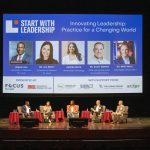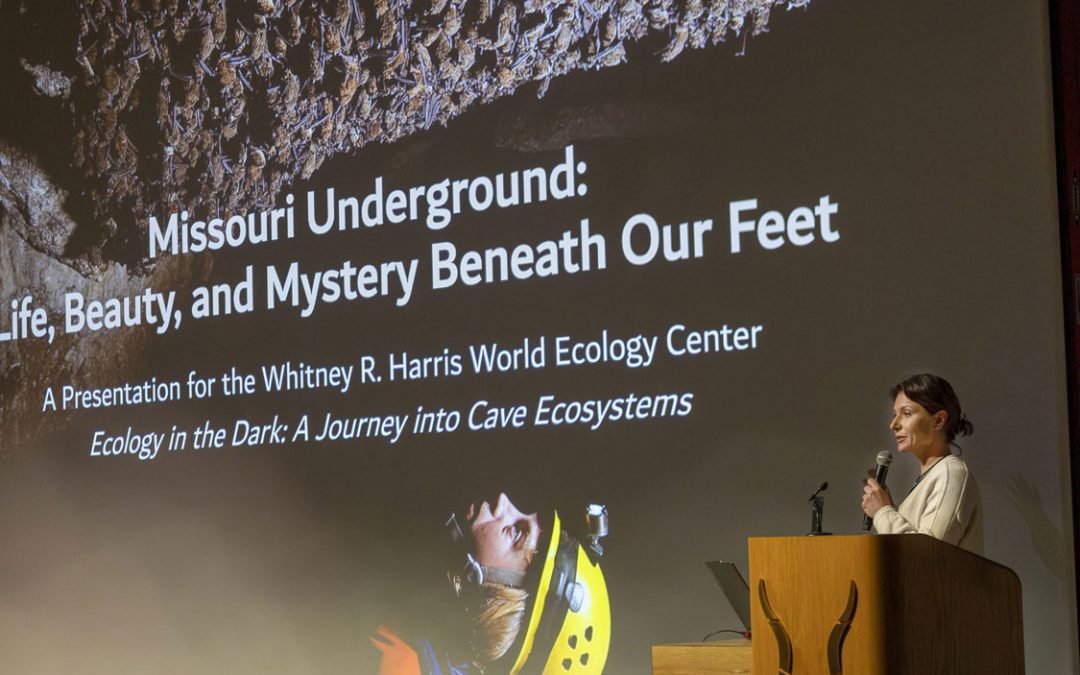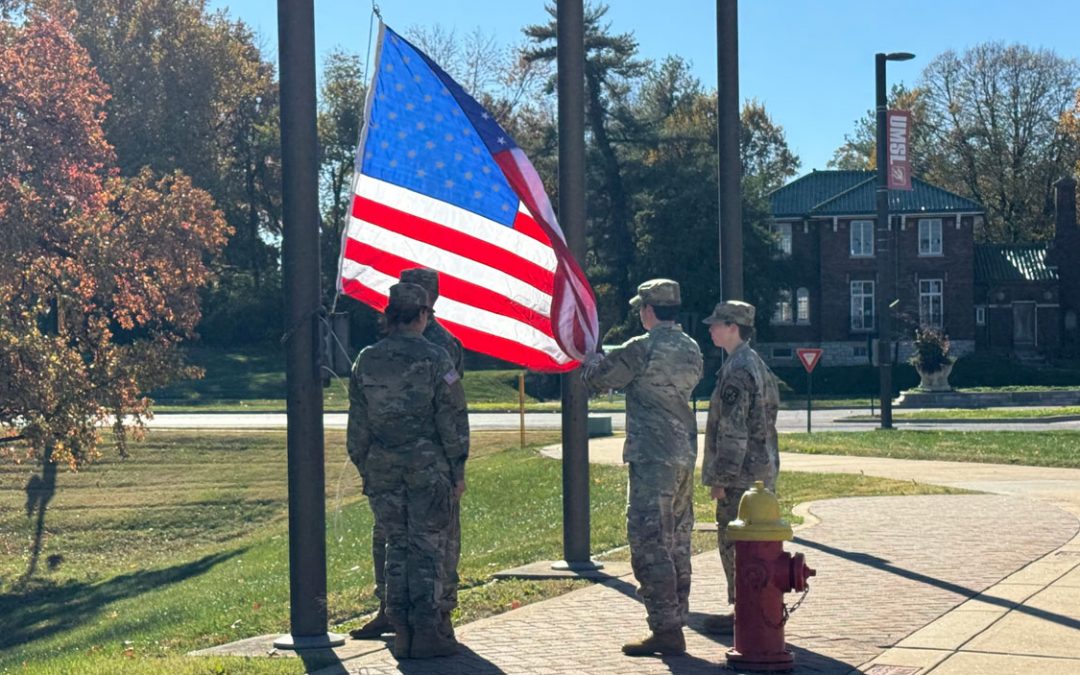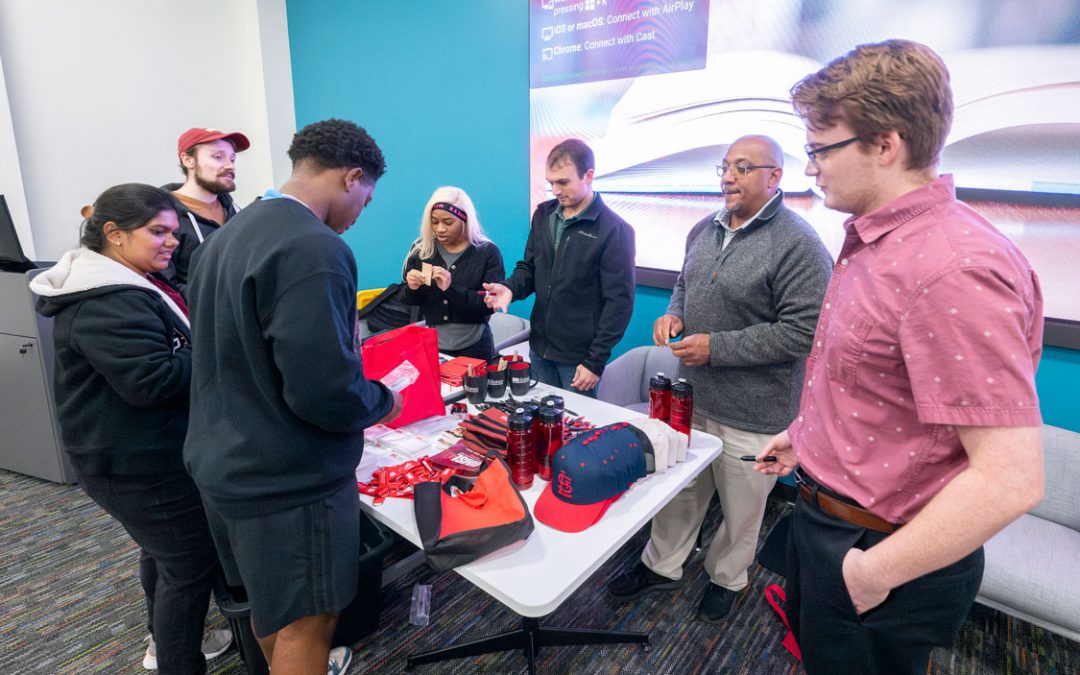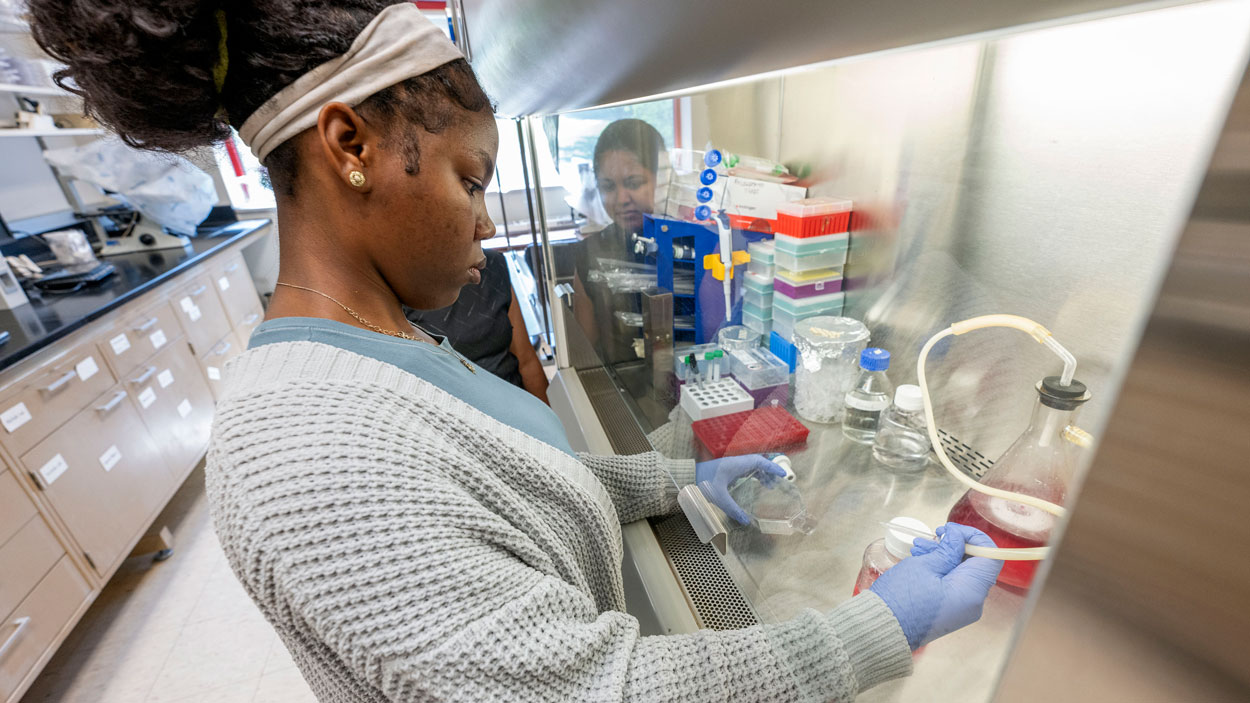
Jolaade Bada, a recent graduate of Hazelwood Central High School and intern in the Collaborative Laboratory Internships and Mentoring Blueprint, runs an experiment while working in the lab of UMSL Biology Professor Wendy Olivas. Bada was one of six area high school students to take part in CLIMB this summer. (Photos by Derik Holtmann)
Jolaade Bada was a strong student who excelled at science throughout her years at Hazelwood Central High School. So much so that she’s planning on following a pre-med track with the goal of one day becoming a dermatologist when she starts college this fall.
But lab experiences Bada had in high school were fairly limited and typically consisted of group activities where a pipette might be shared among her and three of her classmates.
It was eye-opening to be running her own experiments this summer while working in the lab of University of Missouri–St. Louis Professor Wendy Olivas as she participated in the Collaborative Laboratory Internship and Mentoring Blueprint, also known as CLIMB.
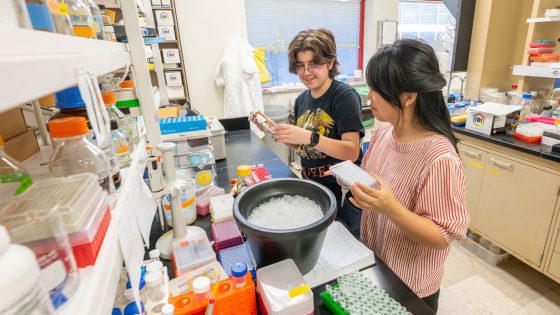
CLIMB intern Charlie Saunders, a rising senior at Hazelwood East High School, works with biology graduate student Shaohua Tang in the lab of Xuemin Wang, the E. Desmond Lee Endowed Professor in Plant Sciences. Wang’s lab researches the resilience of plants growing with deficiencies of nitrogren.
Olivas’ lab conducts research on Parkinson’s Disease, and Bada’s research aimed to examine how the regulation of gene expression by a group of RNA-binding proteins affects the degradation of specific mRNAs associated with the disease.
“It was a very hands-on experience,” said Bada, who learned basic lab skills such as how to label tubes, use a centrifuge, take notes and record results.
She also maintained a culture of human neuronal cells and created mutations in genes involved in Parkinson’s to determine their effect on gene regulation by Pumilio proteins.
“I was comfortable enough to ask questions from anyone,” Bada said. “There wasn’t a time that I didn’t have a reading or I didn’t have a diagram drawn that allowed me to understand what I was doing and the purpose of my research. I enjoyed my time in the lab, and I loved everyone I worked with.”
Bada described her experiences while presenting in front of family members, friends and other supporters last Friday afternoon during CLIMB’s closing celebration, held in the Whitney R. Harris World Ecology Center’s conference room on the first floor of Benton Hall.
She was one of six area high school students who took part in the program as paid interns this summer, joining Hazelwood East students Vajah Bassett and Makayla Glen, Hazelwood West students Imani Mu’Min and Charlie Saunders and University City High School student Synia Brown. It marked the 11th year of a program that aims to foster scientific interest in high-ability students who might not otherwise have had opportunities to receive comparable hands-on lab experience.
CLIMB, supported this year with funding from the James S. McDonnell Foundation, the Trio Foundation of St. Louis and private donors, began as a partnership between UMSL and Jennings High School, led by now-retired biology faculty member Patricia Parker and co-directors Rhonda Key and Miranda Ming, then administrators in the Jennings School District. Since then, it has also served students from Hazelwood, University City, Ritenour and Riverview Gardens.
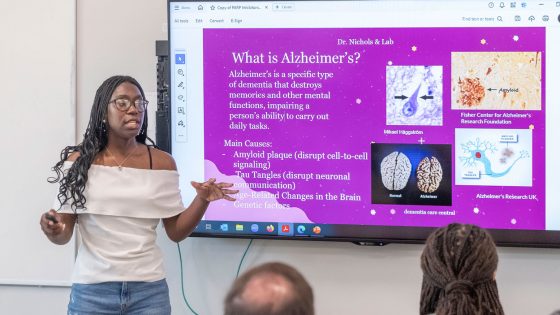
Intern Imani Mu’Min, a rising senior at Hazelwood East High School, gives a presentation about her experience in CLIMB, including research related to Alzheimer’s disease while working in the lab of UMSL Professor Michael Nichols.
“It started trying to fill a critical need in providing accessible, authentic, hands-on scientific research experiences for high schoolers here in north St. Louis County,” said Associate Professor Lon Chubiz, who succeeded Parker as CLIMB’s director. “CLIMB has looked for the past 11 years to show our participants what a future in science looks like and hopefully helps them see themselves in those careers.”
Beyond their active participation in labs working alongside graduate students, undergrads and faculty members, this year’s participants took field trips to the Missouri Botanical Garden, Saint Louis Zoo, Donald Danforth Plant Science Center, Bayer Crop Science and the Shaw Nature Reserve, where they received a tour from members of the Webster Groves Nature Study Society. The field trips were meant give them a glimpse at what active careers in science look like.
“The one that was very notable to me was the Danforth Center,” Bada said. “I liked learning how people came from all over the country – and even different countries – to work on science in that one place, and how they had machines for phenotyping that weren’t anywhere else, and just the lengths that people would go to really discover more in science.”
They had experiences they never would have had elsewhere, such as when they visited the Zoo and got to feed and pet a black rhinoceros. Saunders, entering her senior year at Hazelwood East and dually enrolled at St. Louis Community College, shared a few fun facts she learned about the animals, including that their horns are not made from ivory but rather keratin, the same material that makes up human hair and fingernails.
Brown, who’ll be a junior at U. City, enjoyed her first visit to Shaw Nature Reserve. During what she described as a “plant safari” she even had the opportunity to sample a gooseberry.
But the most impactful moments were often in the lab or in the field.
While Bada worked on research related to Parkinson’s, Mu’Min studied Alzheimer’s in the lab of Professor Michael Nichols from the Department of Chemistry and Biochemistry. Saunders examined how nitrogen deficiencies impacted the development of rice plants while working in the lab of Xuemin (Sam) Wang, who studies lipids as the E. Desmond Lee Endowed Professor in Plant Sciences with a dual appointment at the Danforth Plant Science Center.
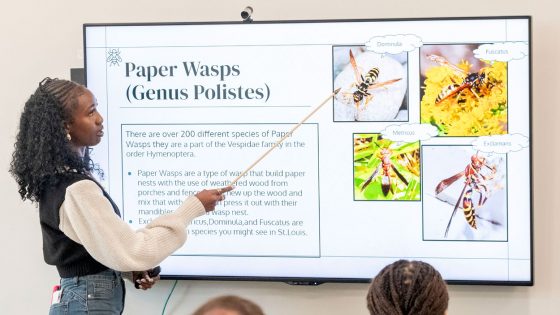
Intern Synia Brown, a rising junior at University City High School, discusses her research on paper wasps during the CLIMB program’s closing celebration on Friday in Benton Hall.
Brown, working in the lab of Assistant Professor Sara Miller in the Department of Biology, tried to explore the impact of tornados on the growth rates of paper wasp nests by gathering and comparing data from sites that were and were not impacted by the May 16 tornado that cut through St. Louis.
Glen, meanwhile, studied the effects of varying amounts of ethanol on the decision-making of bees while a member of Biology Professor Aimee Dunlap’s lab, and Bassett did research on organic and organometallic chemistry – specifically involving catalytic reactions – while working in the lab of Chemistry Associate Professor Eike Bauer.
Bassett, in her second year in CLIMB, found herself working far afield from last summer when she conducted research on the impact of environmental stressors on livebearer fish in the lab of Michi Tobler, the E. Desmond Lee Endowed Professor in Zoological Studies.
“I am not a chemistry person,” Bassett said. “I’m a biology person. I wanted to use this year to basically experience something new, to further my outlook, and it has taught me a lot. Being in the lab really helped me stand my ground and be more confident in myself.”


